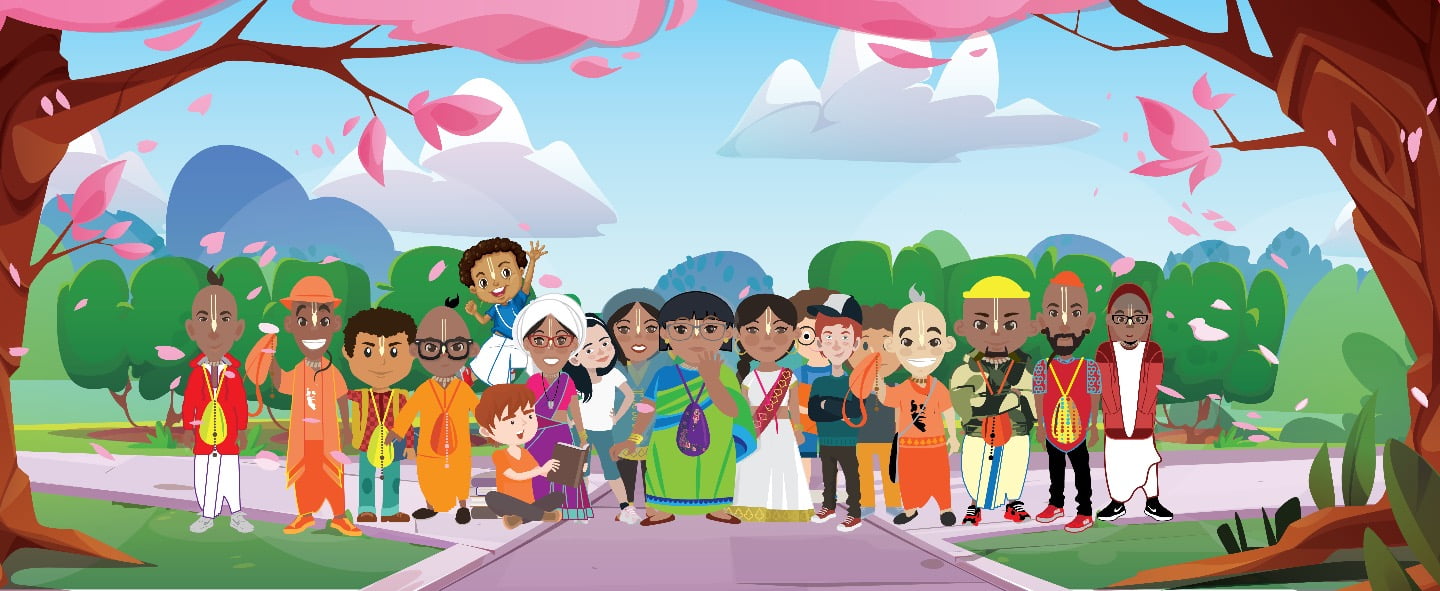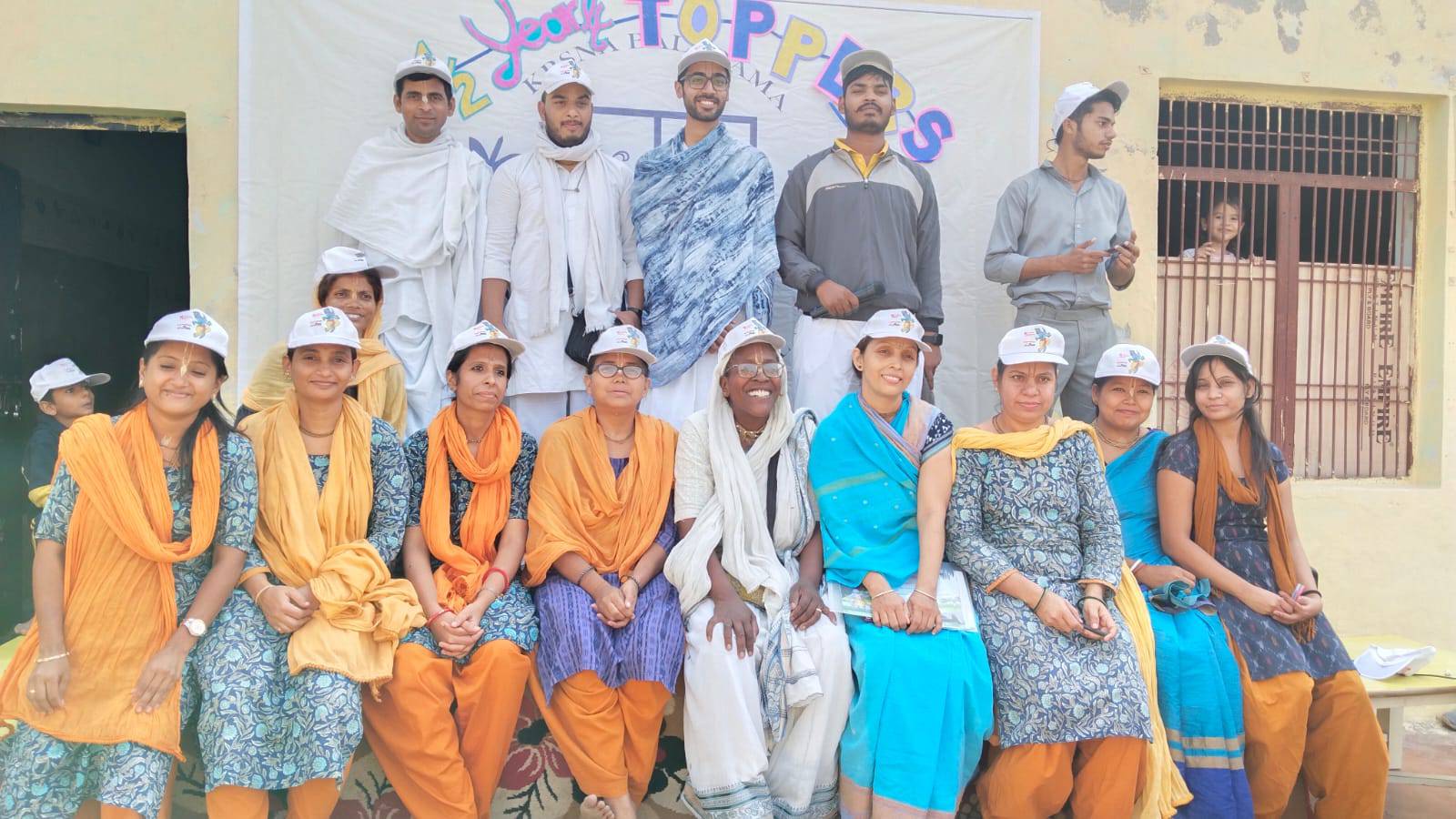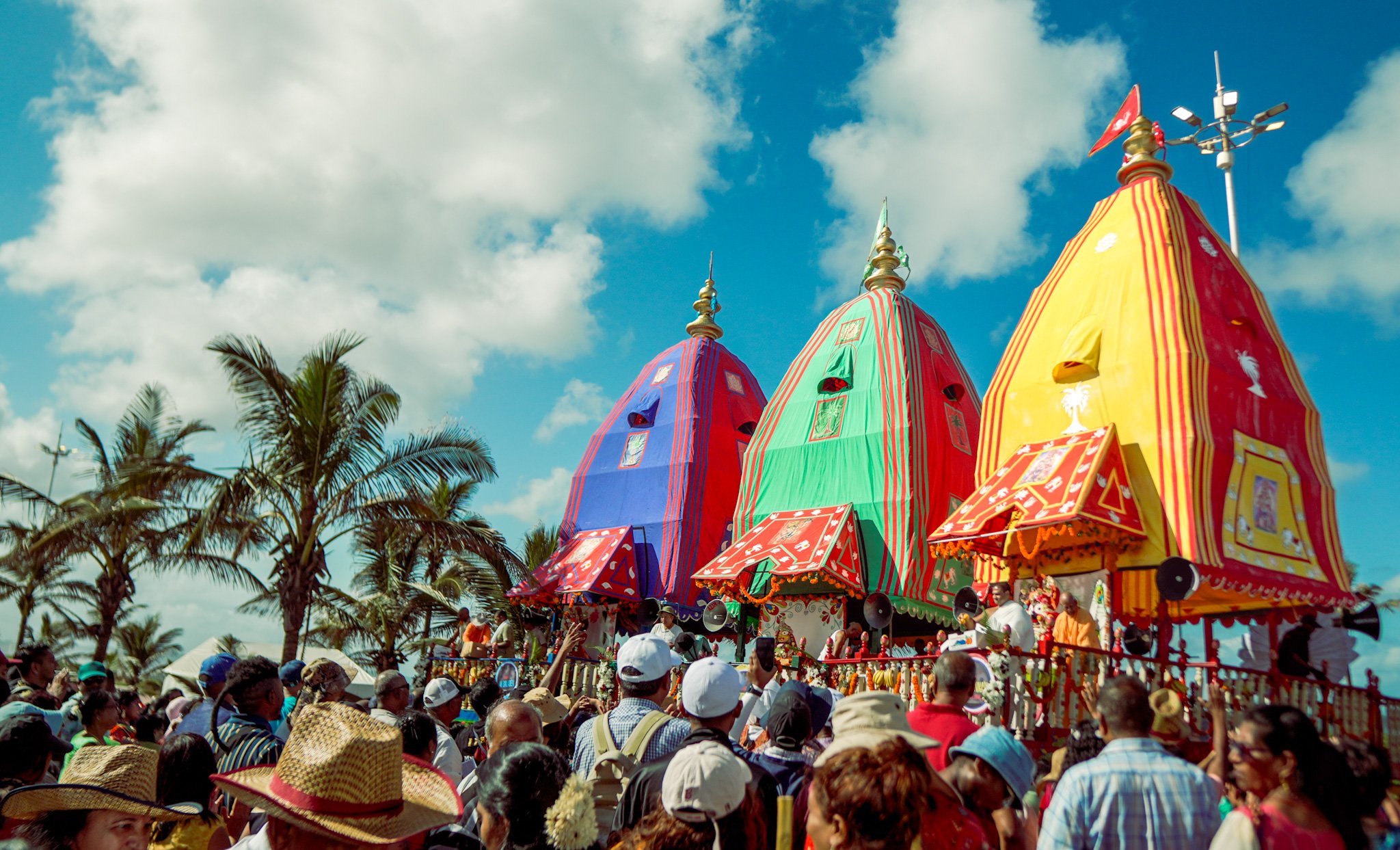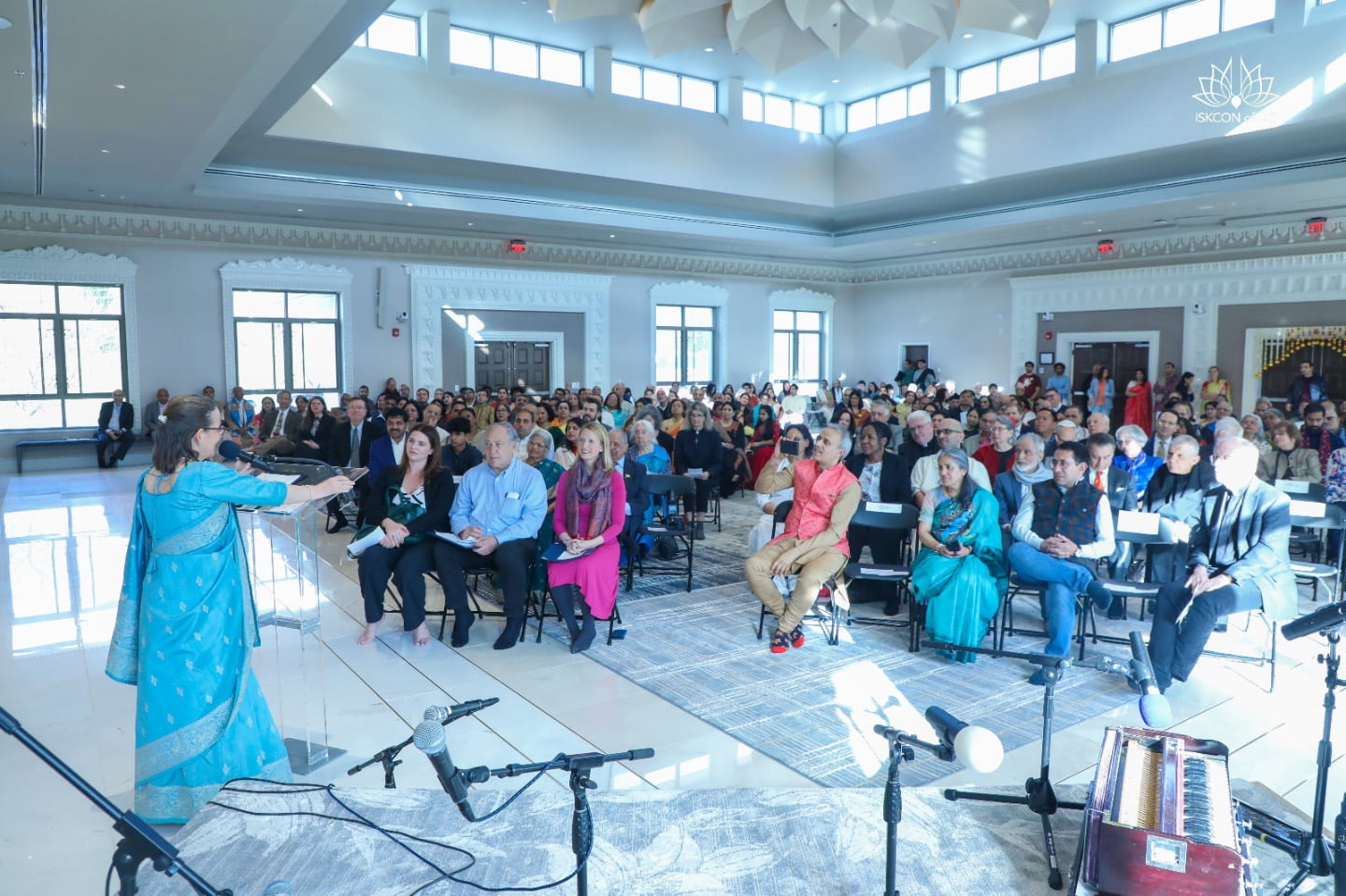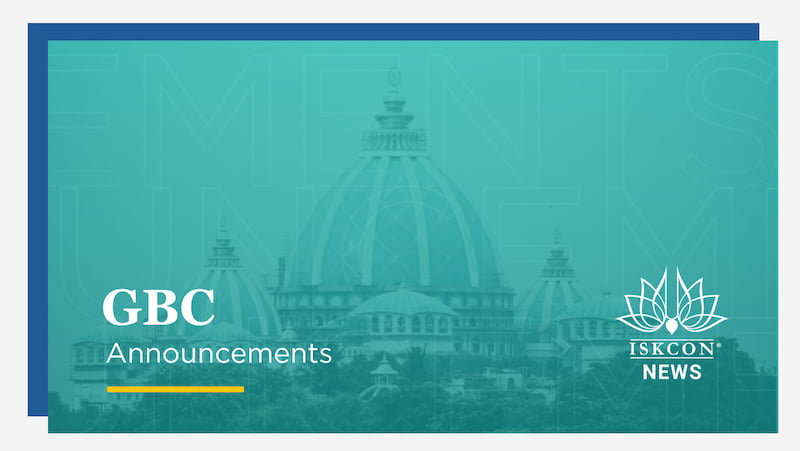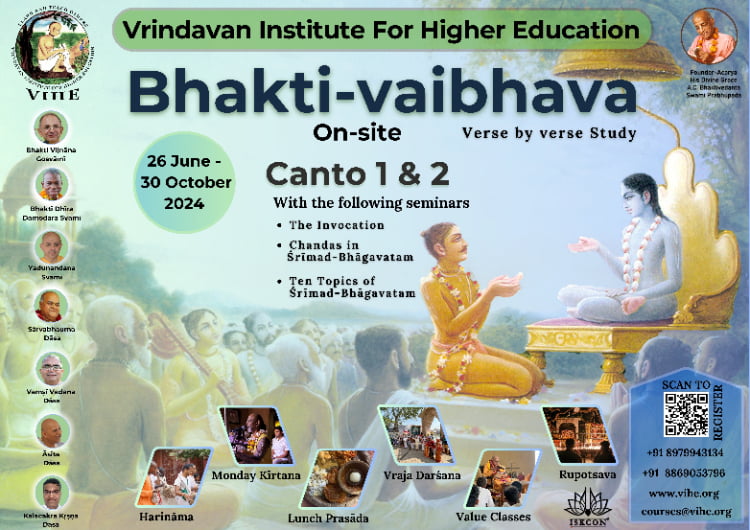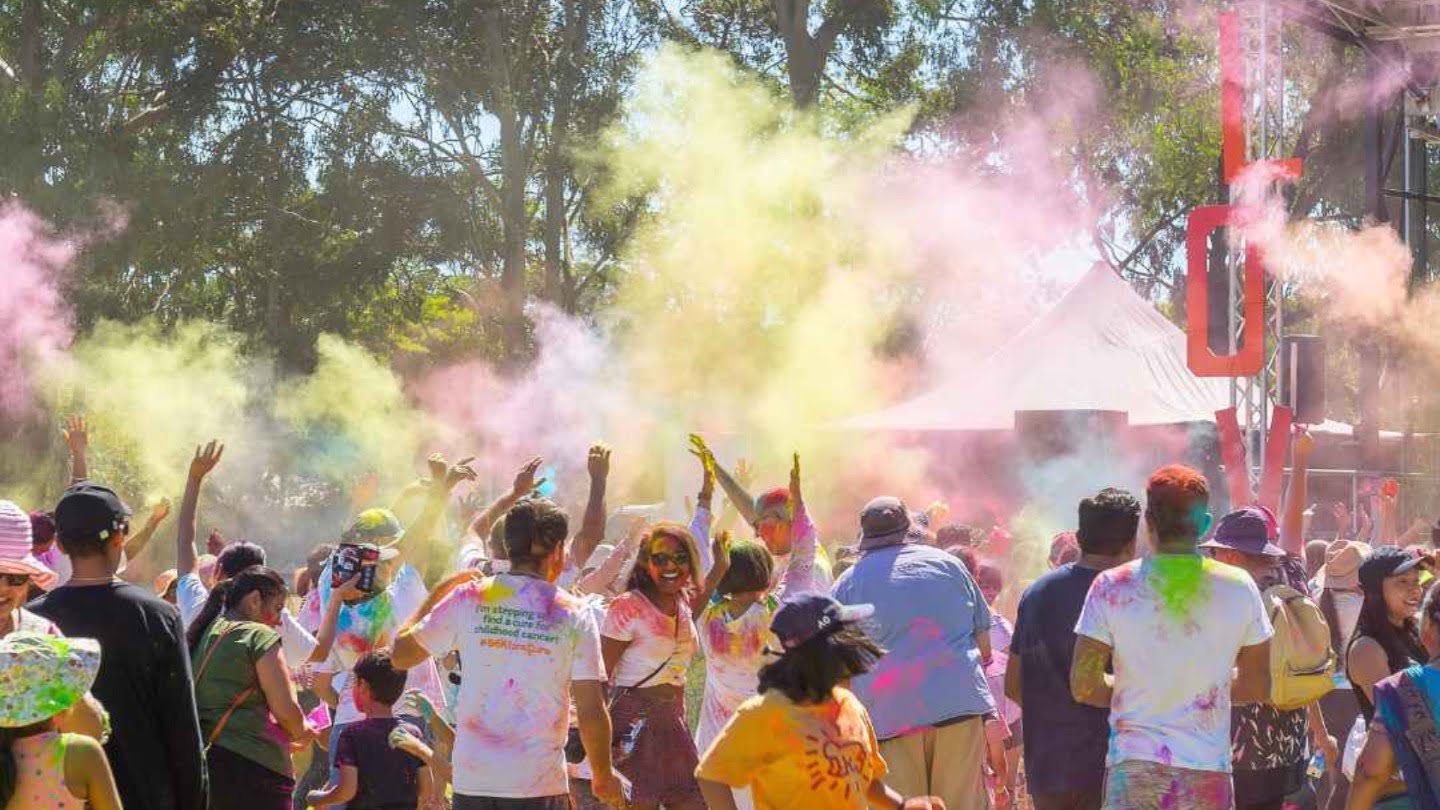New Krishna Balarama Mandir to Open in Botswana
By Madhava Smullen | Sep 15, 2012

Between 600 and 1,500 people are expected every day at the three-day grand opening of ISKCON’s new Sri Sri Krishna Balarama Mandir in Botswana, Southern Africa.
Celebrations for the custom-built Indian style temple in Gaborone, Botswana’s capital, will run from Friday September 21st through Sunday the 23rd.
Attendees will include 40 local devotees, 200 from the South African cities of Durban, Cape Town, and Johannesburg, 30 from England and India, and hundreds of local congregational members and visitors.
Amongst the special guests will be Botswanan Vice President Ponatshego Kedikilwe, as well as seven ISKCON sannyasis: Jayadvaita Swami, Bhakti Chaitanya Swami, Bhakti Charu Swami, Lokanath Swami, Bhakti Narasinga Swami from South Africa, and Rama Govinda Swami.
Devotees will kick off the festivities on Friday morning by carrying Deities of Sri Sri Krishna Balaram—whom they have long worshipped in their old temple—by palanquin to Their new home, with great pomp and ceremony.

The grand new temple
In the new temple, the Deities will be placed on the altar, and a brand new life-size murti form of ISKCON Founder Srila Prabhupada will be ceremonially bathed and placed on an ornate asana, or seat. Devotees will then have their first darshan, or viewing, of Krishna Balarama on Their new altar.
At midday on Friday, Vice President Kedikilwe will arrive to take a tour of the temple, officially open it, and have lunch with the devotees, along with 100 VIPs from various local communities. He’s also expected to give a favorable speech.
In the evening, devotees and guests will enjoy a cultural program featuring dances and a drama based on a story from the Srimad Bhagavatam—that of the elephant king Gajendra, who surrenders to Lord Vishnu when he’s attacked by a crocodile.

The intricately designed wall surrounding the temple
On Saturday, the festival’s second day, the congregation will sing kirtan for hours and observe various auspicious ceremonies to install brand new Utsav, or small Deity forms of Krishna Balarama and Sri Sri Gaura Nitai.
Finally, Sunday September 23rd will see a massive celebration of Radhastami, the appearance day of Lord Krishna’s divine consort Srimati Radharani, with more ceremonies, ecstatic kirtan, and offering upon offering of delicious food.
The festivities will conclude with a large cultural program that evening, featuring a musical theater production of the story of Lord Krishna’s half-man, half-lion incarnation, Narasimhadeva. There will also be Bharat Natyam dances, a Garbha dance by the community’s young children depicting Krishna’s pastimes, and a presentation of the classic ISKCON philosophical drama the Great Brain Robbery.
Three delicious sanctified vegetarian meals will be served every day of the event, and crowds are expected to flow in through the temple doors.

Meditation Pagoda in courtyard
ISKCON Botswana National Secretary Devakinandan Das is excited to see such a major breakthrough in a community he helped establish.
Born in Kenya, he lived in England for many years before following his brother Jamadagni Rishi Das to Selebi-Phikwi, a small mining town in Botswana in 1991.
“Botswana is a lovely place,” he says. “It’s nice and hot throughout the year, the people are friendly, it’s politically stable, and has good national resources. And although it was one of the poorest countries in Africa after gaining independence from Britain in 1966, it’s now becoming one of the fastest-growing economies in the world.”
But Botswana was a desert—not only because 70% of it is literally covered by the Kalahari Desert—but because it had a drought of Krishna consciousness.
“We left a very nice Krishna conscious environment in England,” says Devakinandan. “There we had programs at our house every two weeks, and senior devotees visiting regularly. Here we had nothing; no devotee association.”

The Tulasi Garden
Devakinandan and Jamadagni Rishi brought all of Srila Prabhupada’s books and audio tapes with them to keep them spiritually inspired, and to reach the local people.
Moving to the capital city of Gaborone, they began going house to house and holding kirtans and discussions on Bhagavad-gita. As their effort grew, they rented a house for devotees to live in and held weekly programs at a local Hindu Hall.
By 1994, they had bought their own house and converted it into a temple by building an extension onto it. In 1996, Giriraja Swami installed Deities of Sri Sri Krishna Balarama, and devotees worshipped Them there for seventeen years.
“In the meantime, however, we were always planning for a really grand temple,” says Devakinandan. “We applied for a piece of government-owned land, purchased it in 1996, made four different plans for a temple there between 1998 and 2005, and slowly collected funds.”
In 2005, a special groundbreaking ceremony known as Bhumi Puja was held, and construction finally began in 2007. Finishing touches were completed just this summer.

The golden altar where Sri Sri Krishna Balarama will reside
The finished home of Sri Sri Krishna Balarama, by far the biggest “Hindu” temple in Botswana, is quite something to behold. The 6,500 square foot, three-storey temple stands bright against the blue Botswanan sky, colored in vibrant saffron, salmon pink, and white.
With three domes, it features intricate Orissan architecture, while its Gujarati architect and South Indian artisans have also added elements of their own region’s design traditions.
Each of the three floors of the temple carry their own intricate design and beauty. The first floor is equipped with living quarters for priests and visiting devotees. It also features a 1,300 square foot hall to be used for dining, with a fully-fitted kitchen and store room attached.
Another 1,300 square-foot hall on the second floor will be used as a temple room, with a grand golden altar for Sri Sri Krishna Balarama on one end and a stage and changing rooms for dramas and cultural programs on the other.

Sri Sri Krishna Balarama, the presiding Deities of ISKCON Botswana
Finally, on the third floor is another hall and a peaceful roof terrace, ideal for chanting and meditating.
The temple itself sits on over 17,000 square feet of land, with an intricately designed perimeter wall, a Tulasi garden and a pagoda for peaceful chanting.
Despite the peaceful atmosphere, however, the temple is set in an ideal location in the heart of Gaborone, right next to the city’s Central Business Development.
With such excellent facilities in such a central location, Devakinandan expects the ISKCON Botswana community to grow in leaps and bounds following the Mandir’s grand opening.
“Our main focus will be on cultivating the local people,” he says. “We want to expand our Food for Life program, start offering Bhakti Sastri courses on Prabhupada’s books, introduce interfaith dialogue, and increase book distribution—with the help of BBT Africa, we hope to publish a couple of small books in the local language of Setswana.”

Volunteers, youth and laborers from the community who came together to clean the temple
The new temple in Gaborone has also already begun receiving letters from many schools, some as far as 500 kilometers away, who want to visit. About 300 to 800 children are expected to see the temple and receive prasadam as part of this program every second month.
“All in all, we’re really looking forward to seeing where this new facility will take us,” says Devakinandan. “I feel positive that it will be a wonderful springboard from which to leap into fulfilling Srila Prabhupada’s mission.”




